What's the best quality bag?
What's the best quality bag?
Thinking about the best quality bag[^1]? It's not just one thing. Many factors make a bag high quality. Understanding these helps you choose well.
The "best quality" bag means excellent materials[^2]. It means superior craftsmanship[^3]. It also means thoughtful design[^4]. It is not necessarily the most expensive. It is the one that lasts and serves its purpose well.

As Anlly Liu, with over 20 years in the bag industry, I've seen countless bags. I've worked with many materials and processes. The best quality bag[^1]s always combine durable materials[^5] with careful construction. We've used these principles to build Lilalila[^6]. Our SGS, ISO9001, BSCI, and CE certifications show our commitment. We provide one-stop services, from fabric manufacturing to final export. This ensures quality at every step.
What's the best quality leather for handbags? Wondering about leather quality for handbags? Not all leather is the same. The type of leather greatly affects the bag's durability, look, and feel. Knowing the best types helps you make a smart choice.
The best quality leather for handbags is typically full-grain leather[^7]. It is known for its durability. It is also known for its natural beauty[^8]. It comes from the top layer of the hide. It includes all the natural grain.

I've worked with various leathers for over two decades. I know how important leather quality is. For example, for my higher-end clients, I always recommend full-grain. I remember once, a client wanted a very soft, natural look. We chose a full-grain leather[^7]. It aged beautifully. It developed that rich patina[^9] everyone loves. This really showed the true value of using high-quality materials. It lasts. It looks good.
Here's why full-grain leather[^7] is considered the best and a look at other types:
- Full-Grain Leather: What it is: The highest quality leather. It comes from the outermost layer of the hide. It keeps all the natural imperfections. This includes scars or marks. These add character. Characteristics: Durability: Extremely strong and durable. It resists moisture better than other types. Aging: It develops a rich "patina" over time. This means it gets a beautiful sheen and darkens. This adds to its appeal. Look & Feel: Has a natural, raw look. It feels sturdy, but can be soft. Why it's best: It's the most authentic. It's the most durable. It gets better with age.
- Top-Grain Leather: What it is: The second highest quality. The top layer of the hide is sanded slightly. This removes imperfections. Then it is treated. Characteristics: Durability: Still very durable. Not as much as full-grain. Look & Feel: More uniform look than full-grain. It is softer and more pliable. Usage: Commonly used for high-end handbags. It is easier to work with than full-grain.
- Genuine Leather: What it is: This term is confusing. It does not mean high quality. It typically refers to leather made from the lower layers of the hide. It is sometimes bonded with other materials. Characteristics: Durability: Less durable. It wears out faster. Look & Feel: Often treated to look like higher-grade leather. It typically lacks the natural feel. Usage: Common in more affordable bags.
- Bonded Leather: What it is: Made from scraps of leather. These scraps are shredded and mixed with a binding agent. Then they are pressed onto a fiber backing. Characteristics: Durability: Least durable type of leather. It peels and cracks easily. Look & Feel: Looks uniform. It often feels like plastic. Usage: Used for very cheap products. Leather Type Quality Rank Key Characteristics Aging Process Full-Grain 1st Natural appearance, all imperfections, dense fibers Develops rich patina[^9], beautiful Top-Grain 2nd Slightly sanded, uniform, softer Ages well, but less character Genuine Leather 3rd Split or bonded layers, often processed Prone to wear and tear Bonded Leather 4th Shredded scraps, synthetic binder Peels easily, dries out At Lilalila[^6], we prioritize using the best materials for the specific product. For our premium PU leather bags, we choose high-quality PU. For leather bags, we source from reliable suppliers. We work with our procurement manager to ensure this. This way, we provide the best quality product at every price point. This meets our client's needs, like Clare, who values a durable custom canvas bag.
How do I choose the right bag? Choosing the right bag can be tricky. It's about matching your needs. It's also about matching your style. A good choice makes your life easier and looks great.
Choosing the right bag involves considering three main aspects: your lifestyle, your personal style, and the bag's functionality. A bag should complement your daily activities and aesthetic preferences.

I always advise my clients to think about their customers first. This applies to personal choices too. I recall a meeting with a new clothing brand. They wanted to create a tote bag. I asked them: "Who is your target customer? What do they do daily? What do they carry?" By answering these questions, they designed a perfectly functional and stylish bag for their audience. The same advice applies to you. Think about your own daily life.
Here are key steps to choosing the right bag[^10]:
- Consider Your Lifestyle: Daily Activities: What do you do most days? Commuting to work/school: You'll need space for a laptop, a notebook, lunch, etc. A sturdy tote or a stylish backpack might be best. Running errands/casual outings: Hands-free is often best. A cross-body bag or a small shoulder bag will work. Social events/evenings: You'll only need essentials. A clutch or small top-handle bag is perfect. What You Carry: Make a list of your must-have daily items. Phone, wallet, keys, water bottle, book, makeup, etc. This helps determine the size and number of compartments you need.
- Define Your Personal Style: Aesthetic: Do you prefer classic, minimalist, bohemian, edgy, or trendy? Your bag should reflect your overall clothing style. Colors & Patterns: Do you prefer neutral colors that go with everything? Or do you like bold colors and patterns to make a statement? Material Preference: Do you prefer classic leather, casual canvas, modern PU, or something else?
- Focus on Functionality and Features: Size: As discussed below, choose a size that fits both your items and your body. Compartments: Do you need many pockets for organization? Or do you prefer one large open space? Closure: Do you need a secure zipper? Or is a snap or open top okay? Straps: Consider different strap options. Top handle: For a chic, structured look. Shoulder strap: Comfortable for everyday. Cross-body strap: For hands-free mobility. Convertible: A bag with multiple strap options offers versatility. Weight: Consider the bag's empty weight. Leather bags can be heavy. A heavy bag plus your items equals a very heavy carry. Consideration Questions to Ask Yourself Bag Feature to Look For Lifestyle What's my typical day like? Size, carrying method What I Carry What MUST I have with me? Capacity, number of pockets Personal Style What clothes do I usually wear? Design aesthetic, material, color Functionality How will I use this bag? Closure type, strap versatility At Lilalila[^6], we produce a variety of bags. We meet different needs. Our product manager works to ensure our range covers many lifestyles. From spacious work totes to compact evening bags. We make bags that suit various preferences for our global clients. Our design team focuses on making sure our OEM and ODM orders meet the exact needs of their customers. This is crucial for brands like Atziri and Clare, who have specific aesthetic and practical needs for their customers.
What size bag is best for everyday use? Looking for the perfect everyday bag size[^11]? The "best" size depends on what you do. It also depends on what you carry. Finding the right balance makes a bag truly useful.
The best size bag for everyday use is typically a medium to large-sized tote[^12], shoulder bag, or cross-body bag. This size provides enough space for daily essentials. It doesn't feel overly bulky or cumbersome.

I’ve met many customers. They always want to know about sizing. One of my long-term clients, Lily, who works in corporate gift procurement, often discusses this. She needs bags that are practical for business professionals. For her, a bag that can fit a small tablet, a notebook, and personal items, but still look sleek for meetings, is ideal. We've worked on many prototypes to find this perfect balance.
Here’s a guideline for everyday bag sizing:
What to Consider for Everyday Size: Your Daily Essentials:
Phone, Wallet, Keys: Almost every bag can hold these. If this is all you carry, a small cross-body or mini bag works. Plus basic makeup, small notebook, glasses case: You'll need a small to medium-sized bag. A structured shoulder bag or medium cross-body. Plus water bottle, umbrella, book/tablet, light scarf: This calls for a medium to large bag. A roomy shoulder bag, a larger cross-body, or a structured tote. Plus laptop, files, gym clothes: You definitely need a large tote bag or a specialized work bag/backpack. Your Silhouette:
The bag should be proportionate to your body size. A petite person might feel overwhelmed by a very large tote. A tall person might find a small bag looks tiny. Aim for a bag that complements your height and build. (Refer to the previous "Choosing the right handbag size based on my height and body type" question for more detail). Your Activity Level:
Busy, on-the-go: Hands-free options like cross-body bags or backpacks are excellent. Commuting, desk job: A structured tote or shoulder bag that holds office items. Leisurely errands, social: You can choose a smaller, more stylish bag. Common Everyday Size Ranges: Small (approx. 6-9 inches wide): Holds phone, wallet, keys, lipstick. Best for minimalists or evenings. Medium (approx. 10-13 inches wide): Holds essentials plus a small book/tablet, compact umbrella. Very versatile. Large (approx. 14+ inches wide): Holds a lot, including a laptop, water bottle, extra layers. Ideal for work, travel, or busy days. For most people, a medium-sized bag (around 10-13 inches wide) is the sweet spot. It offers good capacity without being too large.
Size Category Approximate Width (inches) Typical Content Best For Small 6-9 Phone, wallet, keys, small makeup Minimalist, evening, quick trips Medium 10-13 Above + tablet, small book, compact umbrella Most everyday uses, balanced capacity Large 14+ Above + laptop, water bottle, extra clothes Work, travel, busy moms, gym Our product development team at Lilalila[^6] always thinks about sizing. We offer a range from small cosmetic bags to large travel bags. This ensures that any brand we work with can find suitable sizes for their customers, whether they need elegant accessories like Jill, who customizes makeup bags, or everyday functional totes like Atziri’s canvas bags.
What color bag looks best? What's the best color for a handbag? This choice is very personal. It depends on your wardrobe. It also depends on your style. But some colors are more versatile than others.
The "best" color bag is one that complements your wardrobe and lifestyle. Neutral colors like black, brown, tan, gray, or navy are generally the most versatile. They can match almost any outfit.

Through my work in manufacturing for various brands, I've seen firsthand how color trends[^13] come and go. But timeless neutrals[^14] always remain popular. For example, our collaboration with international brands like H&M and Armani often involves producing bags in classic neutral tones. These brands know that these colors sell well year after year.
Here’s a breakdown of handbag colors:
- Neutrals (Most Versatile): Black: The ultimate classic. Goes with everything. Ideal for formal, professional, or casual looks. Every woman should own a good black bag. Brown/Tan/Camel: Warm neutrals. Great alternative to black. Often feels softer or more casual. Excellent with earthy tones, denim, and fall/winter wardrobes. Navy: A sophisticated alternative to black. Pairs well with denim, white, and other cool tones. Gray: A modern neutral. Very chic. It can have cool (blue-gray) or warm (taupe-gray) undertones. It pairs well with almost any color. White/Off-White: Fresh and stylish. Great for spring/summer. Can elevate an outfit. Requires more care to keep clean.
- Metallics (Versatile Statement): Gold/Silver/Rose Gold: Act as neutrals in some ways. They add a touch of glamour. Great for evening bags. Can also elevate a casual daytime look.
- Pop of Color (Statement Makers): Red: Bold and eye-catching. Can add excitement to a neutral outfit. Blue/Green: Can be calming or vibrant. Choose a shade that suits your personality. Pastels: Soft and delicate. Ideal for spring or a gentle, feminine look. Brights: Hot pink, electric blue, bright yellow. For those who love making a strong fashion statement. Less versatile but fun. Choosing Your Best Color: Foundation: Start with one or two classic neutral bags. These will be your workhorses. Expand: Add a metallic bag for evenings or special occasions. Personal Touch: Then, if you want, incorporate a pop of color[^15] that you love. Think about which colors appear most often in your existing clothing. Tip for beginners: If you're buying your first quality bag, choose a black or a versatile brown/tan. You'll get the most use out of it.
Color Category Key Characteristics Best For Examples Neutrals Versatile, timeless, go with everything Everyday, professional, easy matching Black, Brown, Gray, Navy, Tan, White Metallics Glamorous, elevated, can act as neutral Evening, special occasions, adding sparkle Gold, Silver, Rose Gold Pop of Color Bold, expressive, statement-making Adding personality, specific outfit accents Red, Blue, Green, Pink, Yellow, Pastels At Lilalila[^6], we understand the power of color. Our fabric workshop ensures we can offer a rich color experience for canvas and non-woven bags. For leather and PU, we provide a wide palette. Our long-term client Clare often orders custom canvas bags in specific colors that match her brand's aesthetic. We make sure we can deliver those colors perfectly.
[^1]: Explore this link to understand the essential features that make a bag truly high quality. [^2]: Learn about the materials that contribute to a bag's durability and overall quality. [^3]: Discover how craftsmanship impacts the longevity and functionality of bags. [^4]: Find out how design influences both aesthetics and usability in bags. [^5]: Uncover the materials that ensure your bag lasts through daily wear and tear. [^6]: Learn about Lilalila's commitment to quality and design in their bag offerings. [^7]: Explore the unique qualities of full-grain leather that make it a top choice for luxury bags. [^8]: Learn how the natural characteristics of leather enhance the appeal of handbags. [^9]: Understand how a rich patina develops and why it adds value to leather products. [^10]: Get tips on selecting a bag that fits your lifestyle and personal style. [^11]: Find out how to choose the right size bag for your daily essentials. [^12]: Learn why this size is ideal for carrying daily necessities without bulk. [^13]: Stay updated on the latest color trends that can elevate your bag collection. [^14]: Discover why neutral colors are a staple in handbag fashion. [^15]: Get inspired on how to use color to express your personal style through bags.

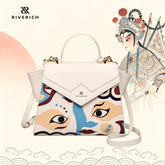

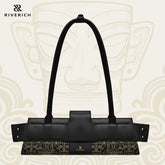

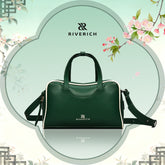

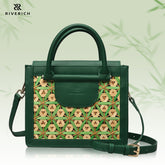

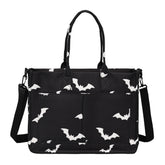

Leave a comment
All blog comments are checked prior to publishing